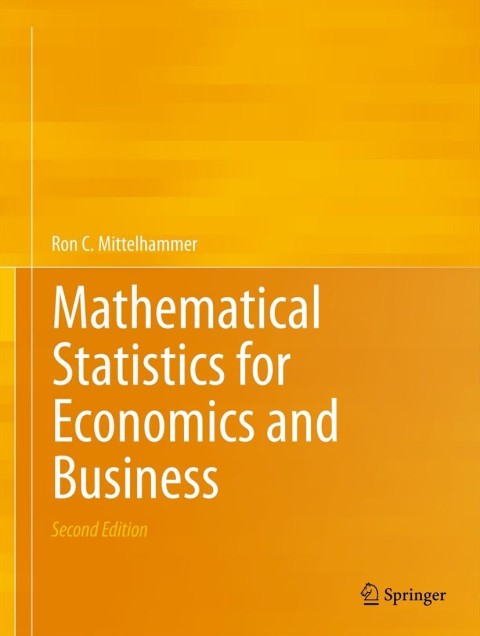The relationship between sales and level of advertising expenditure is hypothesized to be quadratic over the relevant
Question:
The relationship between sales and level of advertising expenditure is hypothesized to be quadratic over the relevant range of expenditure levels being examined, i.e., \(Y_{t}=\beta_{1}+\beta_{2} \mathrm{a}_{\mathrm{t}}+\beta_{3} a_{t}^{2}+\varepsilon_{t}\), where \(y_{t}\) is the level of sales in period \(t, a_{t}\) is the level of advertising expenditure in period \(\mathrm{t}\), and the \(\varepsilon_{t}^{\prime}\) s are disturbance terms assumed to be iid normally distributed. The least squares-based estimate of the relationship using 30 periods worth of observations resulted in the following:
\(\mathbf{b}=\left(\begin{array}{lll}103.27 & 2.71-.13\end{array}ight), \hat{s}^{2}=1.27\)
\(\left(\mathbf{x}^{\prime} \mathbf{x}ight)^{-1}=\left[\begin{array}{rrr}111.17 & 1.71 & .013 \\ & .64 & .0017 \\ \text { symmetric } & & .004\end{array}ight]\)
(a) Test the hypothesis that advertising expenditure has a significant impact on the expected sales level. Use any significance level you feel is appropriate.
(b) Test whether the relationship between advertising expenditures and sales is actually a linear as opposed to a quadratic relationship.
(c) Define a confidence interval with confidence coefficient .95 for the expected level of sales expressed as a function of advertising level \(a_{t}\). Plot the confidence interval as function of advertising expenditures (use expected sales on the vertical axis and advertising expenditures on the horizontal axis). Interpret the plot.
(d) Test the hypothesis that the level of advertising expenditure that maximizes expected sales is \(\geq 15\).
(e) Calculate a confidence interval with confidence coefficient .95 for the level of advertising expenditure that maximizes expected sales.
Step by Step Answer:

Mathematical Statistics For Economics And Business
ISBN: 9781461450221
2nd Edition
Authors: Ron C.Mittelhammer




